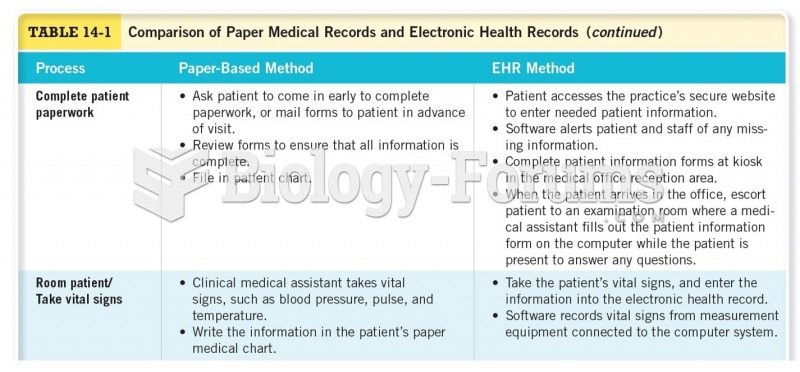Answer to Question 1
ANS: 4
Completion of the admission history is scheduled for a time when interruptions by other staff or visiting family members are minimal. The nurse should create an environment where the client feels comfortable. Conducting the admission history after the client's orientation to the room and completion of lunch would be optimum because the client will not be distracted by hunger, and the interview will less likely be interrupted. The admission history should be scheduled for a time when interruptions by other staff are minimal. During the physician's visit would not be an opti-mum time. The nurse should provide an environment private enough to allow the client to be comfortable when providing personal information. Inclusion of family members should be left up to the client to decide. Information obtained should remain confidential. Immediately before a client's testing would not be an optimum time for obtaining a nursing history. The client may feel more anxious about the upcoming test, impeding communication, and there may not be sufficient time allowed to gather all of the information.
Answer to Question 2
ANS: 1
A client's database originates with the client's perception of a symptom or health problem. If an illness is present, the nurse gathers essential and relevant data about the nature and onset of symptoms. The problem-seeking technique takes the information provided in the client's story to more fully describe and identify the client's specific problems. Habits and lifestyle patterns such as smoking, alcohol use, and exercise may be assessed in an admission history. However, it is not the first question the nurse should ask when obtaining data for a problem-oriented database after the client reports having a health problem. Information regarding family history, such as members who had heart disease, may be obtained in an admission history. However, if a client reports a problem, the nurse should first follow-up with questions relevant to the nature and onset of symptoms. The nurse may inquire about changes in other body systems during an admission his-tory; however, if the client reports a problem, the nurse should first follow-up using a prob-lem-oriented approach. This would include asking specific questions about the client's health problem, such as the nature and onset of symptoms.







